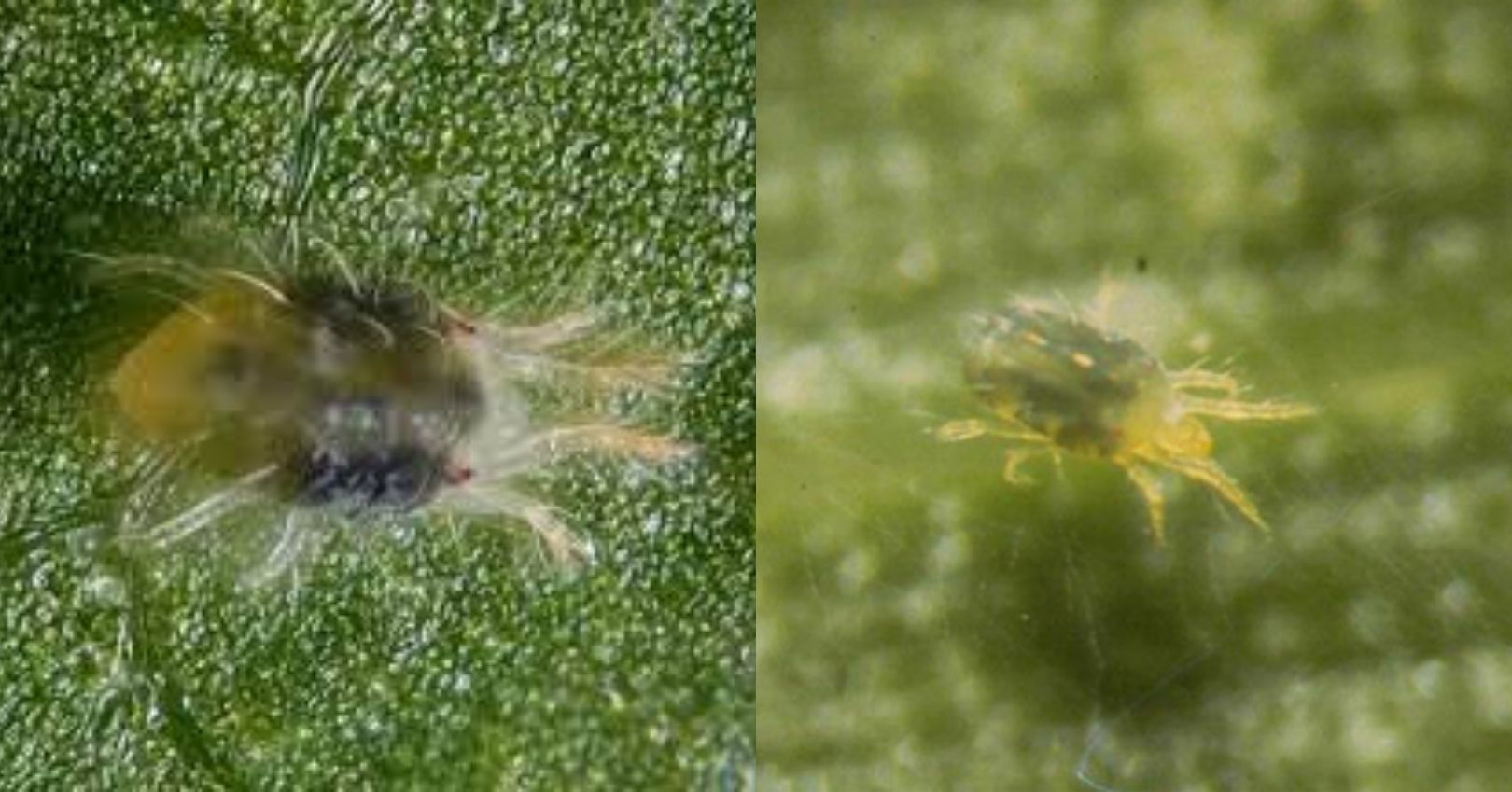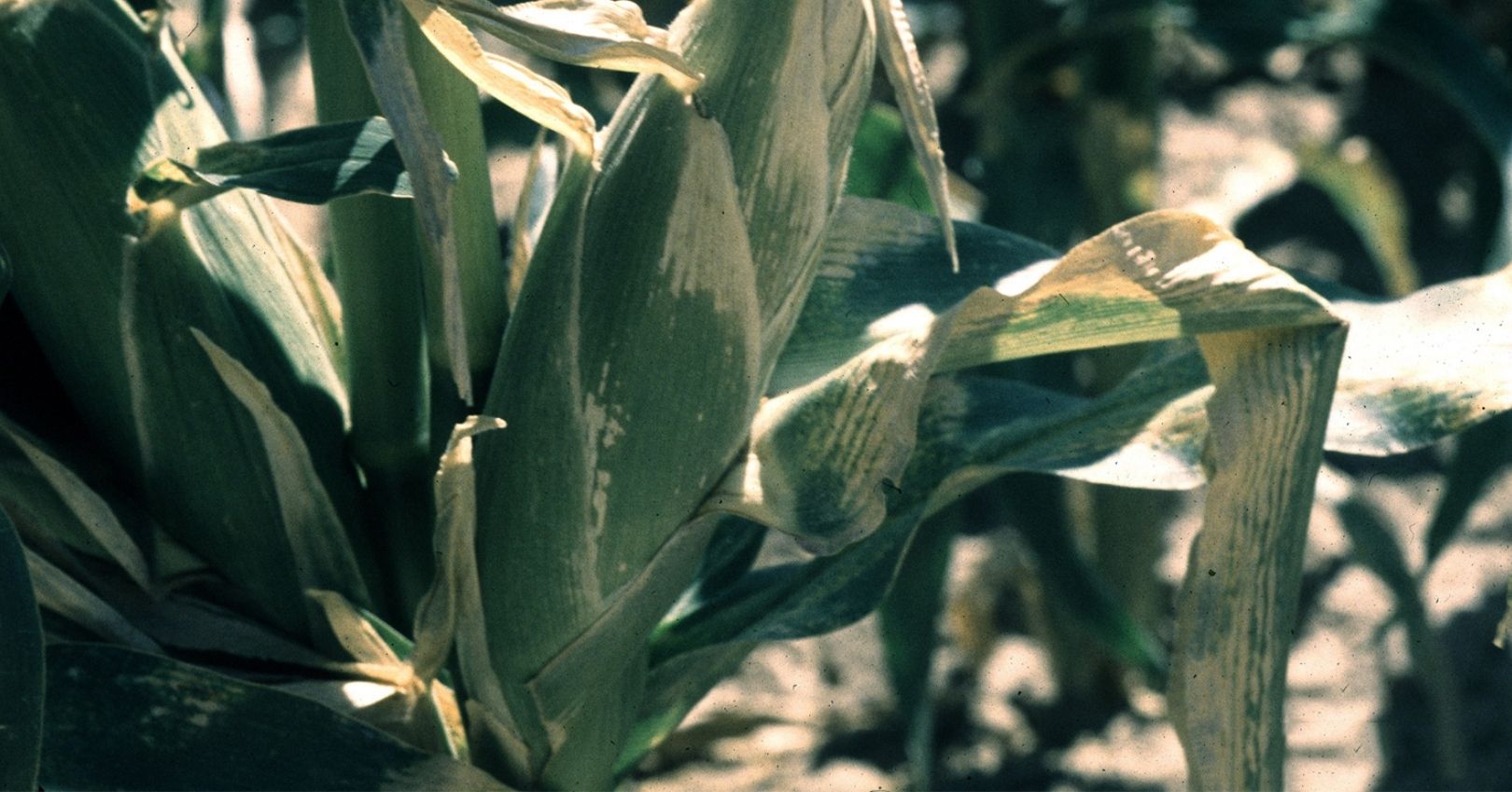Twospotted Spider Mite
Bank’s Grass Mite


Description
Adult: The twospotted spider mite (TSM) is eightlegged, variable in color including pale yellow, green, orange and brown. Females are 0.02 inch (0.4 mm) long and males are 0.01 inch (0.3 mm) long. Contents of their gut show through the body wall and appear as two pigmented spots on the topside of their bodies. The bank’s grass mite (BGM) is similar in appearance, but has two blackish-green pigmented areas that run along its sides and extend the full length of the body.
Egg: Very small, spherical, shiny, and straw-colored.
Larva: Six-legged, colorless; resembles the body form of the nymph and adult. Slightly larger than the egg.
Nymph: Eight-legged, similar in appearance to adults, but smaller. There are two nymphal stages: protonymph and deuto-nymph.
Life History
TSM and BGM have similar life cycles. The mites overwinter in non-crop and weedy areas such as grassy banks along irrigation ditches and roadsides, on weeds, in fallow fields, and in pastures. BGM can begin feeding on corn in the early to mid-summer and are more likely to remain on lower leaves. TSM populations increase in the mid- to late summer, and they will spread onto entire corn plants. Mites can complete their development (one generation) in as quickly as one week; in cooler weather it may take a month. Eggs hatch within 3 to 19 days depending on temperature. Webbing produced by spider mites helps fasten eggs to leaf surfaces and provides protective cover, making the eggs difficult to see. Unfertilized eggs develop into males and fertilized eggs develop into females.
Damage
Spider mites feed by piercing leaf cell walls with their mouthparts, sucking out the cell’s contents, and causing characteristic stippling damage (small spots). Heavily infested leaves are yellow or brown and may also appear burnt on the upper surface (Fig. 10.32). Severe damage from mite feeding causes leaves to dry and fall off, the stalk to break, and kernels to shrink. Infestations start on the undersides of lower leaves and gradually move into the upper part of the plant (TSM). This pattern occurs especially along the field borders or near grassy areas within fields. Corn is most susceptible to yield damage from the tasseling stage to the soft dough stage of growth.
Management
Proper mite identification is important since efficacy of miticides varies between the two species (TSM is more difficult to kill with miticides).
Cultural
- Ensure adequate irrigation. Mites are more likely to develop economically damaging populations in fields that are moisture-stressed during the drier and hotter summer months. Frequent overhead irrigation or heavy rain can reduce the rate of mite population increase.
- Use scouting to detect mite infestations. Check the undersides of leaves for minute webbing on discolored leaves. Check plants that are on the field edges, especially in fields that are close to dusty roads, ditches and grassy areas. Shake discolored leaves over a white piece of paper and look for dark specks that move. Use a hand lens or magnifying glass to see the tiny mites.
- Control weeds. Keep fields, field margins, and irrigation ditches clean of weeds. Spider mites use weeds as alternate food sources.
- Avoid creating heavy dust. Spider mite populations may increase rapidly in areas where dust deposits are heavy on corn leaves.
Chemical
Miticides are typically necessary when 15% to 20% of the leaf area is covered with mite colonies, leaf damage is noted, and hot, dry conditions are predicted. Treatments are expensive and difficult to apply when corn is tall due to inadequate spray coverage. The easiest way to increase spray coverage is to increase the number of gallons of spray solution applied per acre. The greatest benefit from chemical control normally occurs when miticides are applied from the pre-tassel through the soft dough stages of plant development. Similar chemicals used to treat TSM and BGM often vary considerably in their effectiveness, in part, due to differences in resistance (fewer insecticides/miticides are toxic to TSM).
When treating with insecticides/miticides remember:
- Treat before full dent stage. Corn that has reached the full dent stage is unlikely to benefit from treatment for spider mites. Additionally, applications made on plants that exceed four feet in height usually result in poor control since good coverage is difficult to obtain.
- Apply spot treatments to drought-stressed areas of the field first. Leave untreated reservoirs of corn to allow mite predators to recolonize the treated areas; the entire field may not require treatment.
- Avoid certain insecticides. Pyrethroid insecticides (e.g., Ambush, Asana, Mustang, Pounce, and Warrior), malathion, and the neonicotinoid, imidacloprid, not only can kill natural enemies, but have been shown to stimulate spider mite feeding and reproduction. Applications of these insecticides may result in flaring of spider mite populations
Note: Control with any insecticide product will not be adequate if infestations are allowed to become extreme before treatment.
Biological
Many fields don’t require chemical treatment because mite populations are held in check by natural enemies. The most important natural enemies of spider mites are a predatory mite, Amblyseius fallacis, minute pirate bug, Orius insidiosus, and Stethorus, a small black lady beetle known as the “spider mite destroyer.” Other predatory mites, thrips, and lacewing larvae prey on spider mites and offer some natural control.
Note: Most insecticides have a detrimental effect on natural enemies of spider mites.
More Information
Spider Mites on Corn

